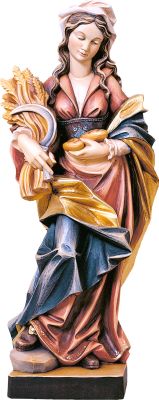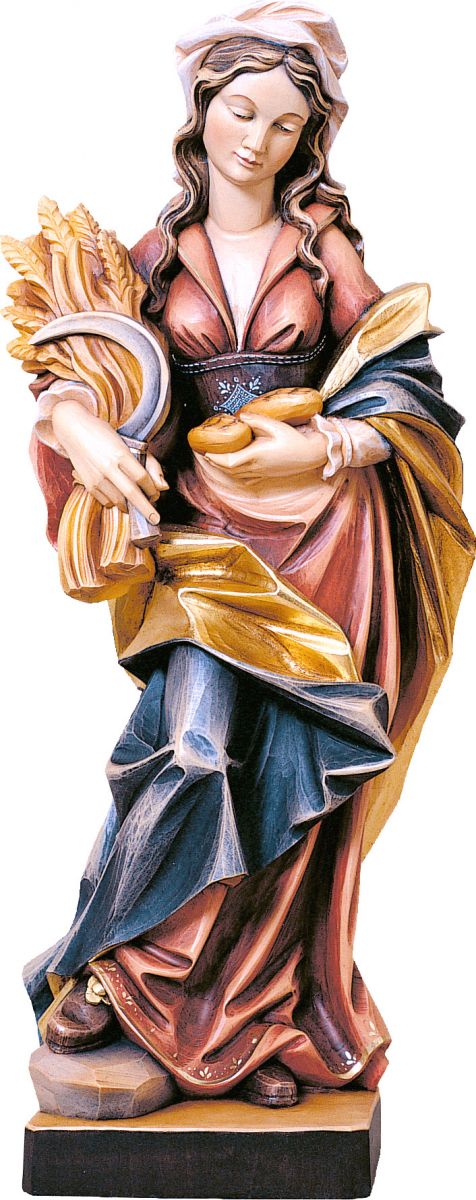
St. Notburga is a Tyrolean folk saint. She is considered the patron saint of maids and agriculture.
Legend has it that Notburga was born around the year 1265 as the daughter of a milliner. She was born in Rattenberg. She was a maid to Henry I of Rottenburg at Rottenburg Castle.
At that time, the Lords of Rottenburg were the court masters of the Counts of Tyrol. Even then, Cecilia took care of the poor, the disabled and the sick. Since her employer allowed her to do so, she distributed the leftovers of the food to the poor. But when Henry I died and his son Henry II became the new lord, Notburga was forbidden to distribute the food by his wife Ottilia.
Notburga obeyed and decided to take fasting days herself in order to be able to continue distributing her food to the poor. But Ottilia did not like this either and so she turned her husband against the saint. When she wanted to distribute food to the poor again, she was stopped by Henry II, who asked her what she was hiding under the apron and in the jug. She replied, "Wood chips and lye." However, he didn't believe her and looked.
But Notburga really carried wood shavings and lye with her. However, the gentleman soon terminated the employment relationship and Notburga went to a nearby community and worked there as a peasant maid. There she helped with the field work and took care of the cattle. She had an agreement with the farmer that she was allowed to stop working after the first bell ringing in the evening to pray.
According to legend, one day Notburga threw a sickle into the sky, which then got stuck on a ray of sunshine because the farmer did not want to let her go to pray. The peasant sent Notburga.
Henry II.bat Notburga to come back to the Rottenburg. His wife had died and a fratricidal war had broken out between Henry and his brother. Notburga managed to bring peace back between the two and remained in the castle until her death.
Before her death, she wished that her body be placed on a cart pulled by two oxen and that she be buried where the cart stopped. Legend has it that the oxen stopped in front of the church in Eben.
This statue is made of wood. For this, either sycamore maple (15 cm, 20 cm and 40 cm) and lime wood (60 cm) are used. You can also choose between three different versions.
